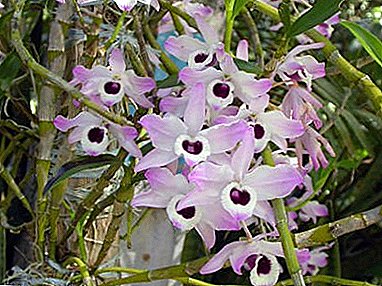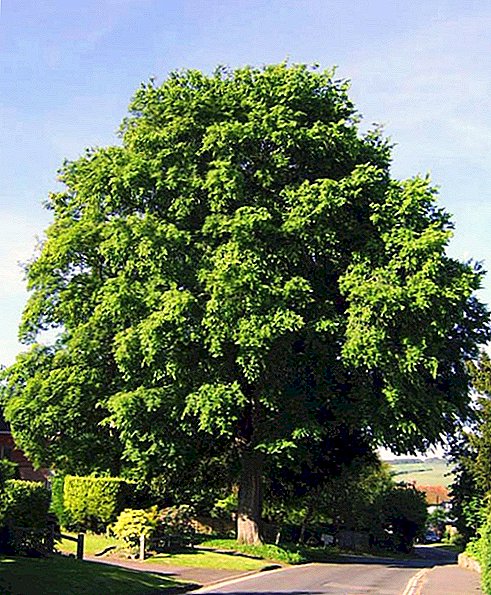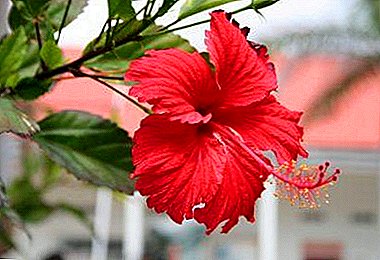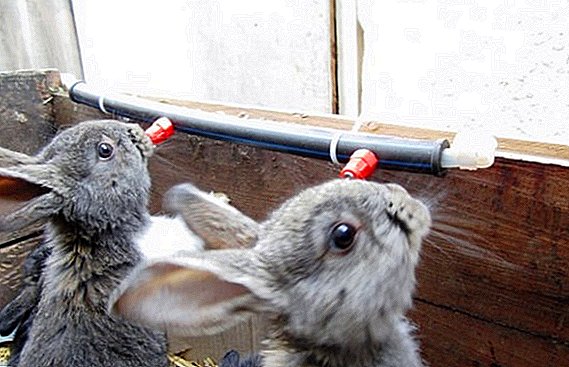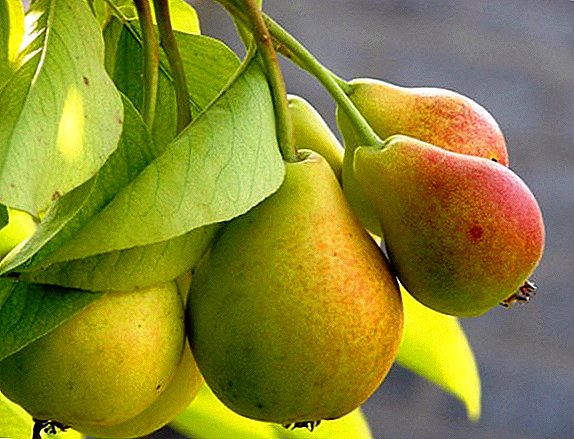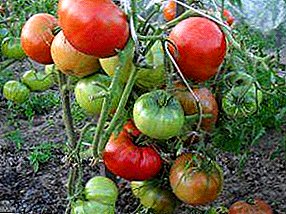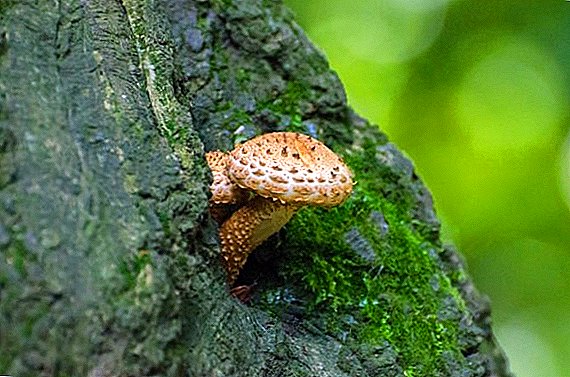 In the natural environment, it is often possible to encounter seemingly seemingly impossible interactions between different kinds of animals or birds, insects and plants. One of them, namely the interaction between plants and fungi, we consider today: the fungus root or mycorrhiza what is it ?.
In the natural environment, it is often possible to encounter seemingly seemingly impossible interactions between different kinds of animals or birds, insects and plants. One of them, namely the interaction between plants and fungi, we consider today: the fungus root or mycorrhiza what is it ?.
Did you know? Mushrooms are interesting works of nature: they are eaten, they make extracts for medicines, they produce cosmetics. Yves Rocher has released a line of cosmetics for middle-aged women based on shiitake mushroom extract. The active substances of these fungi, penetrating into the skin cells nourish them and accelerate the regeneration.
Mycorrhiza - what is it
To understand what a fungus is, you need to consider the structure of the fungus. The fruit body of the fungus consists of a cap and a leg, but the most interesting thing is the hyphae or thin threads, which are interlaced to form a mycelium (mycelium). This organ of the fungus serves both for nutrition and for reproduction (spore formation), as well as for the formation of mycorrhiza.
What is mycorrhiza? This is just a combination of fungal mycelium with the root system of plants. Fungal roots and roots of plants are intertwined, sometimes the fungus is introduced into the root system of plants, which is done for the fruitful cooperation of both parties.
What is mycorrhiza by definition? This symbiotic habitat of fungi on the surface of the root system or in the tissues of the roots of higher plants. 
To better understand the effect of mycorrhiza, consider its types. There are three main types of mycorrhiza: ectotrophic, endotrophic and ectoendotrophic. In its biological essence, the first type is the outer or surface enveloping of the roots by the mycelium, the second type is characterized by penetration into the root tissue, and the third type is the mixed interaction.
So, we found out what is mycorrhiza in biology and now we know that this kind of cooperation is characteristic of almost all plants: grass, trees, bushes. The absence of such a symbiosis, rather an exception to the general rules.
Properties of mycorrhiza for growing plants
Let's take a closer look at what is mycorrhiza and what its functions are useful for plants. Mushroom mycelium is able to produce special proteins, which are certain catalysts in nature. In addition, mycelium digests and breaks down nutrients in the soil, from plant residues to organic and inorganic elements from humus. Plants are capable of absorbing only readily soluble elements of humus, and here they have many competitors: these are weeds and microbes that live in the soil.

Mycorrhiza - This is a mutually beneficial symbiosis of plants and fungi. Plants get nutrients and water, and mushrooms get carbohydrates produced by plants. Without carbohydrates, fungi are not able to multiply and grow fruit bodies. Plants give up to 40% of carbohydrates.
The role of mycorrhiza in plant life cannot be overestimated. Mycorrhiza supplies them with vitamins, minerals, enzymes and hormones. Thanks to the mycelium, the plant root system increases the absorption area of beneficial elements such as phosphorus, potassium and other stimulating substances. Moreover, it not only serves as a food supplier, but also doses it correctly.
Plants grow more actively, in the period of flowering they form more inflorescences with fruitful flowers and, accordingly, fruiting increases. Plants are immune to stress and weather conditions: drought, heavy rainfall, sudden changes in temperature. Mushrooms, forming mycorrhiza with plant roots, act as defenders against some of the diseases of the latter, such as, for example, fusarium or late blight.
Due to its ability to digest and break down organic and inorganic compounds of humus, mycorrhiza cleans the soil for plants from excess salts and acids.
Did you know? In nature, there are predatory fungi that feed on living organisms, worms. These mushrooms grow mycelium in the form of rings acting as traps. Rings with adhesive backing are compressed like a loop when the victim falls into them. The more prey twitches, the stronger the trap is tightened.

Mycorrhizal vaccinations
Few mushrooms do not form mycorrhiza, because this symbiosis has existed since the beginning of the development of flora on earth. Unfortunately, in suburban areas mycorrhiza is often destroyed as a result of prolonged use of chemicals, mycorhiza dies and during construction. Therefore, to help their plants, gardeners vaccinate.
Mycorrhiza vaccine - it is a preparation in the form of a powder or a liquid that contains particles of the live mycelium of fungi. After a kind of inoculation of the soil, the bacteria of fungi begin to cooperate with the root system of plants, which forms a natural mycorrhiza.
Mycorrhizal vaccines are also popular today for indoor flowers, there is a large selection for vegetables, garden flowering and herbaceous plants, as well as coniferous plants such as hydrangeas, rhododendrons, heather and roses. When vaccination should be remembered that the root system of very old trees is too deep and it is not suitable for mycorrhiza.
Important! The mycorrhizal vaccine is administered once in the life of the plant, and each plant interacts and forms mycorrhiza with certain fungi. No mycorrhiza suitable for all plants.

Features of the use of mycorrhiza for plants
Mycorrhiza preparation is applied by watering or spraying the crops, and directly into the soil. When vaccination into the soil, make several shallow holes directly in the ground near the plant and pour the vaccine into it.
Many are interested in the question "What plants do not form mycorrhiza and with what mushrooms, this symbiosis is also impossible?". Today, few plants are known that do very well without mycorrhiza: these are some species of the Cruciferous family, Amaranths and Marevy. Mushrooms that do not form mycorrhiza - umbrellas, oyster mushrooms, champignons, dung beetles, wild mushrooms.
Mycorrhiza should be used after harvest, that is, in the fall. During the winter, the mushrooms form mycorrhiza with the roots of sleeping plants, and the results will be noticeable in the spring. Unlike plants, mushrooms do not fall into anabiosis in winter and continue to be active. If you use the drug in the spring, its active action will be noticeable next year.
The use of mycorrhiza is important when transferring crops to a new or permanent place after rooting of seedlings. The action of the drug will reduce the stress of the plant and accelerate its adaptation. After vaccination with mycorrhiza preparations, a significant growth and more accelerated development of cultures is observed. 
Important! Mycorrhiza - it is not a fertilizer, and it is not recommended to combine it with chemical preparations, since it can be destroyed by them. Top dressing is carried out exclusively with organic fertilizers.When using mycorrhiza for indoor plants, there are also a few rules:
- Powder preparations for indoor plants are introduced into the potting soil, then watering is carried out. The composition in the form of an emulsion is drawn into a syringe and injected directly into the root system into the soil.
- After vaccination, the plant is not fertilized for two months. The same period does not use fungicides.
- More effective for flowerpots are vaccinations, which contain particles of living mycelium, and not spores of the fungus. These include gel formulations with live mycelium, which form mycorrhiza immediately, while spores do not have the conditions for development in a closed pot.
Advantages and disadvantages of using mycorrhiza in plant life
The main advantages of using fungus: 
- Cultivated crops get enough water and more nutrients;
- The area of absorption of moisture in plants increases.
- Plants acquire resistance to weather conditions, unfavorable soil composition, resistance to stress, and immunity to root infections.
- The action of mycorrhiza stimulates the growth, flowering and fruiting of cultivated plants.
- The quality characteristics of fruit and berry plants are improved.
- The root system is strengthened and the ability to root after transplant is improved.
Vaccination with mycorrhiza will facilitate the cultivation and care of grafted cultures, since the fungus root will allow the plant to receive both water and nutrients in the right amount. You will be able to pay less attention to procedures such as plant nutrition and watering.


